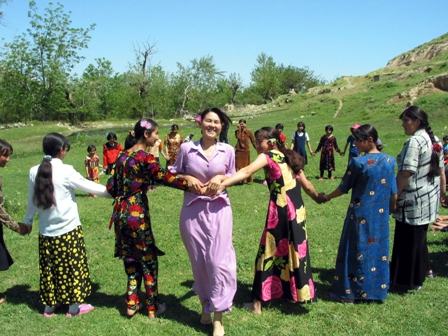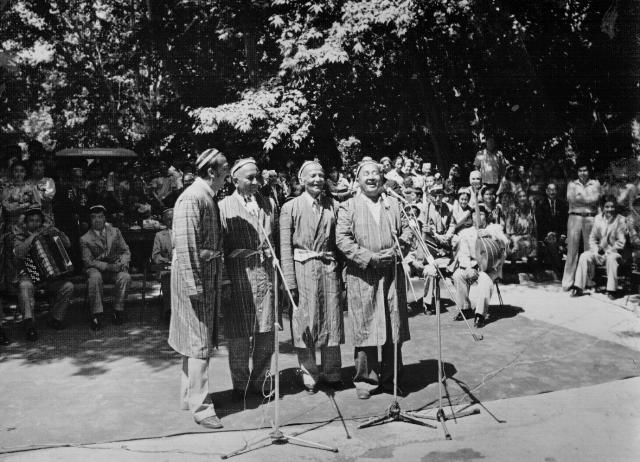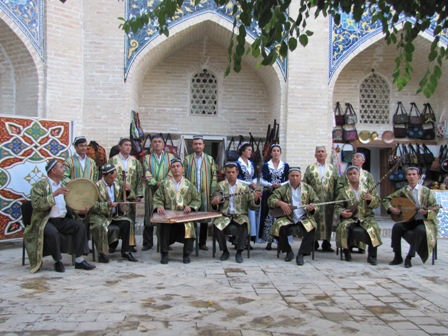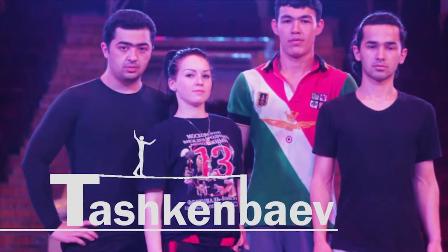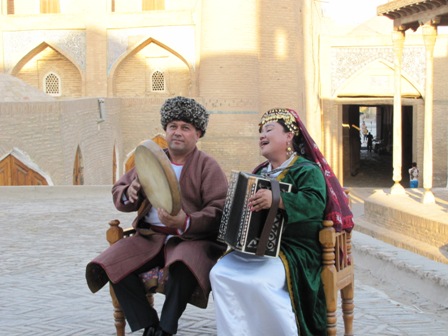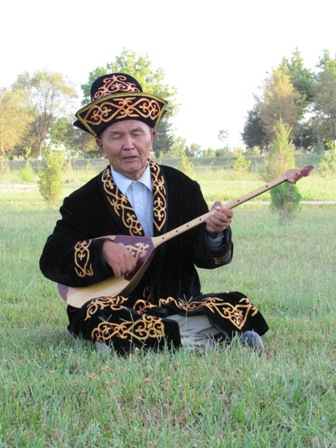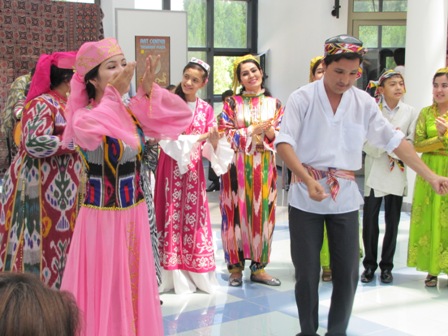Surkhan dances
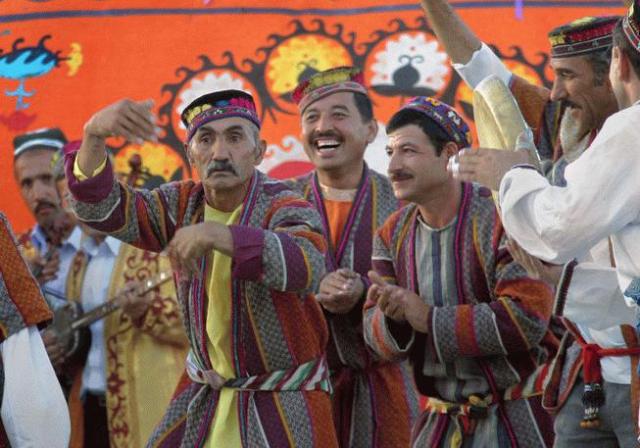
Domain: Performing Arts
Index Number: 02.05.03
Surkhan dance or the dance of Surkhandarya stands out with its originality. Its formation and development is closely linked to ancient nomadic lifestyle and culture of the population, living in the south of Uzbekistan.
Women's dances are more heartfelt and bright, reflect light and vivacious walk. The movements of arms and hands are expressive, and the body stance is smooth and elegant. During the dance women-dancers always use certain everyday items such as wooden spoons, chighiriq (spinning wheel for spinning threads), chiroq (candelabrum), etc. Men's dances are more active. They constantly use jump outs and squatting with refined bending of the body (torso) and raising arms in upward direction. Mostly this type of dance reminds of passionate hopping (especially such dances as "dance with knives" and "dance with wooden sticks"). Sometimes these dances resemble "flying eagles".
In mountainous regions of Surkhandarya juveniles dance by tightly closing their eyelids together, putting out their forefingers (as if they want to point to something); or nod by putting together their forefinger and middle finger. The dance is based on exact rhythm, and the melody is felt in the movements of dancer. This occurs even when there are not only percussion instruments (like doira and naghora), but also entire instrumental ensembles, the melodies of which are at the "heart" of the dance, and shape dance movements.
Much like in other dances, in the dances of Surkhan there are peculiar movements, which have their own names and purposes. For example:
• "tolqama" (free movement of torso);
• "tebranma" (circular movement);
• "irchitma" (jumping up during movements made with legs);
• "ghajir qondi" (movement of legs);
• "qanot" (swinging with hands like they are wings);
• "moralash" (spying);
• "muloyim" (careful walk);
• "shilshila" (movement of hands);
• "siltama" (swift movement of hands and legs);
• "uchirma" (jumping in place while standing), etc.
Women-dancers usually used dresses made from local fabric (such as alacha, boz, janda). The colors of dresses and lozim (wide trousers) were of red, light green, blue or light yellow colors. Sleeves were wide; hem and sleeves had ornamentation. Over the dress thin camisole was worn and on the head – kerchiefs made of cotton or skullcaps with small beads (munchoq doppi - skullcap with beads or bakhmal doppi - skullcap made of bakhmal). There were always some adornments (like bijouterie items) on the neck and on hands: bilak uzuk (bracelets), zebigardon (a chain of adornments worn on chest), zirak (earrings), zafaband, shoda marjon (a chain of necklaces), nozigardon (a chain of coral necklaces), shozik (bead necklace), kiftak, kokrak tumor (chest necklace), munchoq rurak and qoltiq tumor (beads and necklaces, which ward off the evil eyes), etc.
Men's dresses consist of the following: yaktak or oddiy koynak (simple shirts or shirts, made from white print dress, which do not have buttons), sholvor (wide trousers); on the feet – muki (original footwear from soft leather), popish or simple leather boots. Depending on season men wore men's chopon (made using such fabrics called alacha or janda) over their shirts or camisole. The dresses were worn depending on the nature of dance, i.e. reflecting daily life or festive event.
The most popular Surkhan dances are "Changqovuz" (the dance, which is accompanied by tunes of the instrument called "chang-qobuz"(jaw harp)), "Kadi" (pumpkin), "Sozana" (the name of embroidery), "Qoshiq" (the dance with decorated wooden spoons), "Chiroq" (dance with candelabrum), "Labida kholi" (beauty spot on the lips), "Urchiq" (mechanism for spinning the threads), "Podachilar raqsi" (the dance of shepherds), "Chavandozlar" (the dance of horsemen, the participants of folk game called "kopkara" (goat hunting)), "Boysun mavrigi", "Tovuq" (the dance of hen), "Chorqars" (four claps), "Pichoq" (dance with the use of daggers), "Yakku-yak" (the most popular song and dancing genre), "Ufu-jakala" (a joke), etc.
The bearers of Surkhandarya dancing traditions are Kholiq Khursandov, Abdulla Karim oghli, Mulla Juma Dutori (dutori – the person who plays on dutar), Sharif oghli, Khoji Bolta raqqos (raqqos - dancer), Orzigul raqqosa, Khursand Qurbon oghli, Mulla Umar Dutorchi, Zikrilla Umarov, Abdukhalil Nazarov, Shoira Qurbonova, Komil Rakhmonov and others.
The traditions of folk dances are currently being revived and promoted by such folklore ensembles as "Boysun", "Bulbuligoyo", "Shalola", etc.





